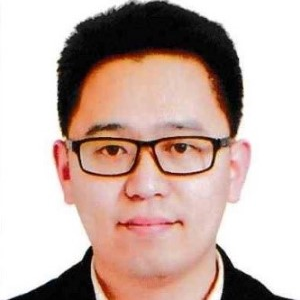The Applications of Graphene and Other Advanced Materials in Energy Conversion and Batteries
A special issue of Materials (ISSN 1996-1944). This special issue belongs to the section "Energy Materials".
Deadline for manuscript submissions: 20 October 2024 | Viewed by 648
Special Issue Editors
Interests: graphene; advanced materials; energy conversion; batteries
Interests: hydrogen energy; hydrogen production; hydrogen combustion; hydrogen safety; hydrogen internal combustion engines; hydrogen fuel cells; hydrogen policy; hydrogen energy storage; hydrogen catalysis
Special Issues, Collections and Topics in MDPI journals
Special Issue Information
Dear Colleagues,
In the realm of cutting-edge scientific advancements, the pivotal role of graphene and advanced materials in energy conversion and battery technology shines brightly. Graphene, a single-layer configuration of carbon atoms, exhibits an array of extraordinary traits including exceptional electrical conductivity, robust mechanical prowess, and unwavering thermal stability. These exceptional attributes have positioned graphene as a beacon of promise for diverse energy conversion processes.
Within the domain of energy conversion, the utilization of graphene-based materials reverberates across solar cells, fuel cells, and thermoelectric devices. Graphene's innate electrical conductivity emerges as a paramount asset, facilitating the seamless flow of charges in solar cells, thereby augmenting their efficiency and amplifying their power output. Furthermore, the expansive surface area of graphene allows heightened sunlight absorption, culminating in an all-encompassing elevation of energy conversion efficiency.
Shifting our focus to the paradigm of batteries, the exhaustive exploration of graphene and its avant-garde counterparts burgeons with the potential to transmute energy storage capabilities. Graphene-infused electrodes, a product of extensive research, flaunt formidable traits such as remarkable capacity, expeditious charge–discharge kinetics, and an elevated cyclability quotient within lithium-ion batteries. The coherent, interconnected architecture of graphene heralds a new era in electron and ion transport, cascading into an unprecedented enhancement in battery performance.
Delving deeper into the intricate tapestry of innovation, the amalgamation of graphene with transition metal oxides, polymers, and carbon nanotubes begets composite materials boasting supremacy in both energy conversion and storage realms. These dynamic composites unfurl the potential for crafting energy devices that are simultaneously lightweight, pliable, and marked by peak performance standards.
To cast our gaze over the broader horizon, it becomes evident that graphene and advanced materials are poised to usher in a revolutionary epoch in energy conversion and battery technologies. Their dynamic interplay stands to revolutionize not only efficiency and energy storage capacity, but also the bedrock stability of these technologies. These unique properties collectively hold the reins of a profound transformation, promising to carve an indelible mark on the landscape of renewable energy production and storage. Invariably, this trajectory guides us towards a future founded upon sustainable and immaculate energy paradigms.
Dr. Jing Zhao
Dr. Zuoyu Sun
Guest Editors
Manuscript Submission Information
Manuscripts should be submitted online at www.mdpi.com by registering and logging in to this website. Once you are registered, click here to go to the submission form. Manuscripts can be submitted until the deadline. All submissions that pass pre-check are peer-reviewed. Accepted papers will be published continuously in the journal (as soon as accepted) and will be listed together on the special issue website. Research articles, review articles as well as short communications are invited. For planned papers, a title and short abstract (about 100 words) can be sent to the Editorial Office for announcement on this website.
Submitted manuscripts should not have been published previously, nor be under consideration for publication elsewhere (except conference proceedings papers). All manuscripts are thoroughly refereed through a single-blind peer-review process. A guide for authors and other relevant information for submission of manuscripts is available on the Instructions for Authors page. Materials is an international peer-reviewed open access semimonthly journal published by MDPI.
Please visit the Instructions for Authors page before submitting a manuscript. The Article Processing Charge (APC) for publication in this open access journal is 2600 CHF (Swiss Francs). Submitted papers should be well formatted and use good English. Authors may use MDPI's English editing service prior to publication or during author revisions.
Keywords
- graphene conductive materials
- advanced materials
- energy conversion
- batteries
- nanotechnology
- electrochemistry
- sustainable energy
- nanomaterial composites
- energy harvesting







